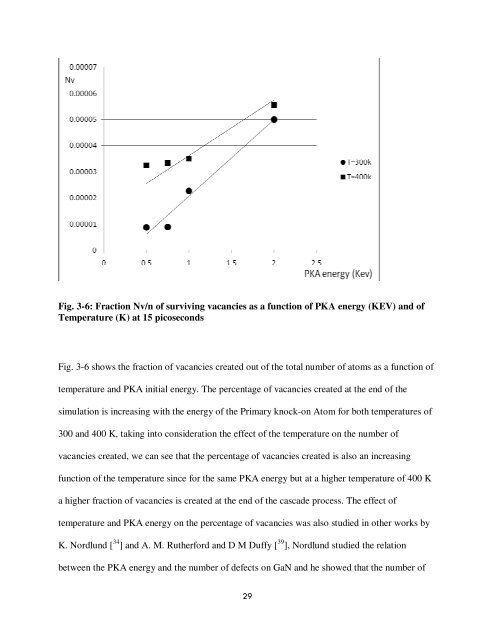DEFECTS IN METALS AND SIMULATION OF MECHANICAL ...
DEFECTS IN METALS AND SIMULATION OF MECHANICAL ...
DEFECTS IN METALS AND SIMULATION OF MECHANICAL ...
Create successful ePaper yourself
Turn your PDF publications into a flip-book with our unique Google optimized e-Paper software.
Fig. 3-6: Fraction Nv/n of surviving vacancies as a function of PKA energy (KEV) and of<br />
Temperature (K) at 15 picoseconds<br />
Fig. 3-6 shows the fraction of vacancies created out of the total number of atoms as a function of<br />
temperature and PKA initial energy. The percentage of vacancies created at the end of the<br />
simulation is increasing with the energy of the Primary knock-on Atom for both temperatures of<br />
300 and 400 K, taking into consideration the effect of the temperature on the number of<br />
vacancies created, we can see that the percentage of vacancies created is also an increasing<br />
function of the temperature since for the same PKA energy but at a higher temperature of 400 K<br />
a higher fraction of vacancies is created at the end of the cascade process. The effect of<br />
temperature and PKA energy on the percentage of vacancies was also studied in other works by<br />
K. Nordlund [ 34 ] and A. M. Rutherford and D M Duffy [ 39 ], Nordlund studied the relation<br />
between the PKA energy and the number of defects on GaN and he showed that the number of<br />
29

















